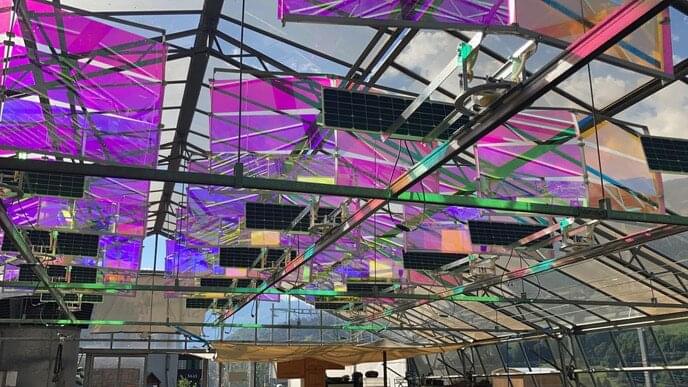Plants use light waves from only a portion of the spectrum for photosynthesis—the remainder can be recovered and used to generate solar power. That’s the idea behind the solar modules developed by EPFL startup Voltiris. Following encouraging preliminary results, a new pilot installation was recently installed in Graubünden.
In Switzerland, growing tomatoes, cucumbers, peppers and other light-and heat-intensive vegetables requires building a greenhouse—but operating one consumes a huge amount of power. Farmers have to carefully balance crop yields and economics with environmental concerns. “It costs more than CHF 1.5 million a year to heat a 5-hectare greenhouse,” says Nicolas Weber, the CEO of Voltiris. “And a greenhouse of that size emits roughly the same amount of CO2 per year as 2,000 people.”
The Swiss federation of fruit & vegetable growers, which cultivate several thousand hectares across the country, has set a target of eliminating all fossil-fuel-based energy from its farming processes by 2040. The system developed by Voltiris can go a long way towards reaching that goal. Its technology is based on the fact that plants don’t use all of the waves contained in sunlight; the remaining ones can be concentrated onto photovoltaic (PV) cells to generate solar power. Voltiris’ system is lightweight and designed to track the sun’s movement across the sky, and boasts daily yields on par with conventional solar panels. The first vegetables grown under Voltiris’ system were harvested this summer through pilot tests carried out at two greenhouses, in the cantons of Valais and Graubünden.
